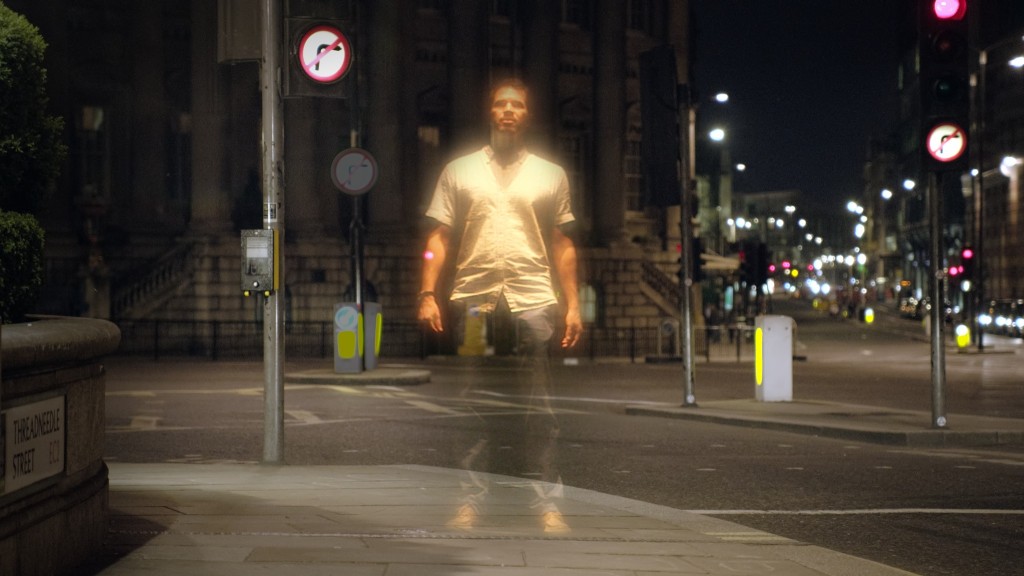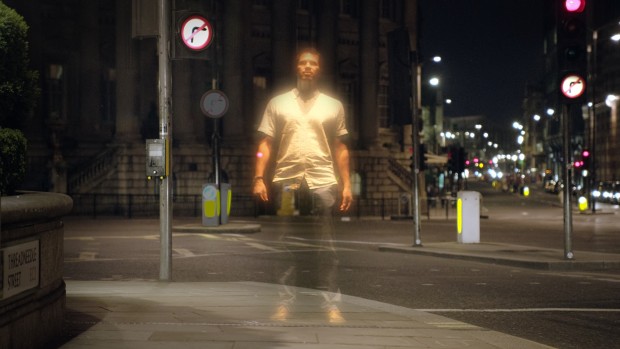
Jack Welsh speaks to Mark Boulos about his new video installation, Echo, and the other works on display as part of his current solo show at FACT.
Jack Welsh: Your documentary films critically engage with topics such as political-economic conditions, capitalism, revolutionary militancy and religious ecstasy. Would you agree that there are contradictions at play between your films exhibited at FACT?
Mark Boulos: With each project, I try to resolve the commonalities and contradictions of the previous works. All That Is Solid Melts into Air (2008) presents two screens opposite each other. The first represents Nigerian rebels who are fighting oil corporations mining their land, opposite a film of commodities traders in Chicago, who are trading futures and derivatives of oil. The attention and loyalties of the viewer are divided between these competing situations. It is about activating the space between the screens but also an institutional and self-critique of my own materials, as electricity and plastic comes from oil. Formally, it was structured as a Marxist dialectic based on commodity fetishism with petroleum. With Origin of the World (2009), I was interested in moving from a Marxist to psychoanalytic dialectic by creating a portrait of myself, but subtracted. I attempted this by editing out my voice and placing the viewer in the position it was filmed it from. Ultimately, I was trying to capture myself without being confessional or specific with my personality
JW: Your works All That Solid Melts into Air (2008) and No Permanent Address (2010) represent communities on the Niger Delta and guerilla squads of the New People’s Army in the Philippine jungle. How did you navigate ethics between filmmaker and subject?
MB: I was worried about visiting Nigeria as a westerner and filming people on the Delta – what right do I have to represent that? At the same time, you can comfortably go gallery hopping in London or Berlin and forget that there are multiple wars happening or people starving. When I arrived in Nigeria, I realised I didn’t have to worry because the people I was filming would address these issues more directly and eloquently than I ever could. Filming in the Philippines was harder. As I was living under the same threat as the guerilla groups, they trusted me to represent them faithfully. On the other hand, they are considered a terrorist group. When they wanted to give me a weapon, I had to refuse.The critique of this work is that they are Maoists who have taken a vow of poverty and I’ve put their image on screen in the bourgeois art market. That hypocrisy is clear. However I feel that the fact of making the project is addressing that hypocrisy – that it the self-critique. It is also the limit of artistic production in this bourgeois art world. All of my work is about about selfhood and radical otherness: it is meant as a provocation.
JW: Echo signals a stylistic departure from your work also exhibited at FACT, in terms of both content and working process. Did you employ new processes in creating the work?
MB: I worked with an animator on All That is Solid Melts into Air. There is a moment where the background behind capitalist merchants pulls away and they are suspended in an abyss; that was an attempt to reveal the constructedness of a realist image. Echo was a further development of that. The first image you see in Echo is yourself standing in a documentary landscape. Using optical camera techniques and then animation, the spatial perspective and temporal synchronicity of the image is dissolved. Dziga Verov, the Bolshevik filmmaker, talks about vertical editing and horizontal editing. Horizontal editing follows a linear trajectory of shot-after-shot, while vertical is about putting multiple images within the same shot. Working with a technical team on Echo was fascinating for me as I would ask for something and they would show me. As a filmmaker, you’re basically directing the people you’re filming, asking questions or subtly leading them. This is not entirely different. Echo elucidates a lot of the previous concepts in my work and has allowed me to focus on my formal ideas.
JW: Can you talk about the relationship between temporality, self-perception and technology in your work?
MB: I came across the research of Professor Olaf Blanke, who manipulates self-perception using 3-D video to create a sense of dislocation, generating what he calls an ‘out of body experience’. I was excited by this research. Olaf is not a psychologist: he is a cognitive neurologist. Through video and technology, I was attempting to manipulate the brain to provoke those responses. That was the start of the collaboration that led to Echo.
JW: You have previously said that neuroscience is unfairly stigmatised in the arts and humanities – why is this?
MB: Not unfairly stigmatised, but there is an unnecessary conflict between the scientific study of the body and the humane study of the self. We are embodied. If an idea is true, it should have resonance across both fields.
JW: There are mythological and historical references inherent in your work at FACT – such as Echo and the term doppelgänger. Do you draw on these references to construct possible new mythologies?
MB: I’m interested in mythology and how it structures our ideas and beliefs. While irrational, these inherited belief systems persist in modernity and inform our language of aesthetics, images and words. People enforce it in reality even if it is contradictory, either through their own ecstasy or militancy, such as the ideas behind miracles and revolutions. That’s the commonality between religion and mythology but also political ideology – a belief so transcendent it becomes real.
JW: What motivated you to use London, represented in a distorted, otherworldly form, as the landscape for Echo?
MB: I filmed it at Bank Intersection, which from a specifically imperial point of view, it is the centre of global financial power. As the space expands around you, the buildings such as NatWest and the Bank of England shrink. It represents an architectural doubling as the alienation of capitalism. Beyond finance, it is about urbanism and the experience of modern social alienation; there is a sense of foreboding and danger, which is what the work is about.
JW: Are you going to capture viewers’ reactions to Echo?
MB: We may. One of the neuroscientists in Olaf’s lab wants to record viewers’ reactions and study them. While it might be useful for their research, it won’t be part of the work.
Mark Boulos at FACT, Liverpool, is on display until Thursday 21 November 2013.
This interview was originally published on Corridor8 on 28 October 2013.
